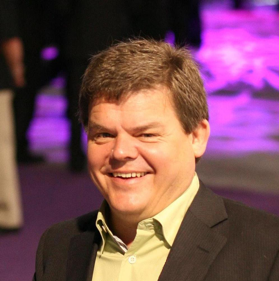Technology enables nonlinear production
IT and IP technologies have enabled the boom in connected devices such as PCs, mobiles, tablets and games consoles. This has given audiences a greater choice of viewing platforms for watching their favorite television content not only on different devices, but also using different services, such as on-demand or streaming.
Such a trend is not only going to continue, it will grow exponentially over the next decade. Ericsson’s strategy group predicts that there will be 50 billion connected devices worldwide in eight years. This will drive a dramatic rise in the number of hours audiences spend watching Internet video, which is expected to overtake traditional broadcast TV by 2019.

To be able to effectively compete in the new marketplace, broadcasters need to repurpose original content for multiple platforms, such as mobile, and multiple formats, such as stereoscopic 3-D.
The freedom offered to audiences of what to watch, and where and when to watch, has led to a shift in the dynamic of who is in control of the viewing experience, away from the broadcasters and aggregators to be firmly in the hands of the consumer. While there are still those happy to watch what is available, more and more viewers want to dictate what, when and where they watch.
To be able to effectively compete in such a marketplace, broadcasters need to repurpose original content for multiple platforms and formats. However, additional transcoding and packaging creates more work for broadcasters and content distributors. Typically, the broadcasters and content owners have responded by adding “silos” within their operations center to cater to new platforms, increasing costs and complexity. This is happening at a time when they are seeing their main source of income, advertising, reduced as it is spread across more channels, and they are looking to reduce costs and become more efficient.
Along with the requirement for multiplatform distribution is a realization that live events can drive a premium revenue model, either by pay-per-view or through increased advertising. Therefore, there is a move amongst content owners and broadcasters to cover more events and produce more content from each event. This means deploying crews and equipment to smaller B & C events and trying to become more efficient in the coverage of such events.
Over the last few years, IT and IP technology has enabled nonlinear workflows in post production and news, dramatically increasing efficiency and reducing costs. However, because of the performance required, it has had little impact on the live production environments, where workflows have barely changed in 20 years.
The professional video industry's #1 source for news, trends and product and tech information. Sign up below.
Nonlinear production
IT and IP technology can now deliver the required performance to enable us to take nonlinear workflows and techniques into the live and production environments while simultaneously enabling the production of multiformat content for the new mobile platforms — nonlinear production.
Nonlinear production enables broadcasters to create lucrative new revenue streams from multiplatform outputs by inserting metadata into content during the production process and automating the output of multiple streams. In addition, production companies can produce additional feeds following specific players or riders for additional chargeable special interest feeds.
A great example would be to produce a feed that follows specific countries’ competitors in motorcycling, so that that country’s broadcaster has more enriched content than just the regular international clean feed with graphics and commentary. Today this is only possible with a complete duplication of the production setup, but developers are already working to reduce the complexity of these added-value feeds.
Much of the work must be done through automation and the automation of metadata creation, which clearly reduces manual overheads, but it is also dependent on the same rapid technology developments that are powering the increase in connected devices.
The increase in processor speeds and therefore video processing capabilities of CPUs and GPUs, the expansion of disk drive capacities, the increase in the performance of Internet distribution through the use of optical fiber — and the decrease in cost of all of the above — are all contributing not only to the rise in popularity of streaming video, but also the ability to build extremely high-performance professional systems from consumer off-the-shelf technology.
An important consideration is that the underlying infrastructure of these IT-based systems is resolution-independent. This offers the potential to finally escape the dependence on a baseband video infrastructure that is limited to specific formats and offers the opportunity to move to a generic transport layer capable of carrying audio, video, metadata, intercom, streams and files all on one common infrastructure.
By the end of 2013, expect to see vendors delivering complete end-to-end nonlinear file-based workflows from acquisition through to multiformat distribution for all types of content: live, production and news all tied together within a media workflow application framework.
Nonlinear production will enable producers to reach the nirvana of being able to create content once and distribute it across multiple platforms faster and more effectively than ever before.
—Graham Sharp is Senior Vice President, Corporate Development, at Grass Valley.

Graham Sharp is VP of Global Sales and Marketing at BCNEXXT. With a strong track record of transforming company cultures, integrating businesses, and driving shareholder value, he brings deep expertise in broadcasting. His career includes roles in international broadcasting across Asia, Europe, Canada, and the US, working with top companies like Avid Technology, Discreet Logic, and Grass Valley. A strategic thinker and skilled communicator, Graham is highly customer-focused and excels at turning ideas into action.
